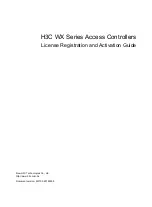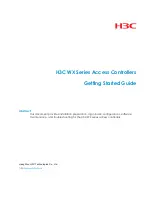
7
3. STATUSES OF THE CHARGING VEHICLE
STATUS A:
Vehicle is not connected
STATUS B:
Vehicle is connected/not ready to receive energy
STATUS C:
Vehicle is connected/ready to receive energy/no ventilation of the charging area is required in buildings
STATUS D:
Vehicle is connected/ready to receive energy/ventilation of the charging area is required in buildings
STATUS E:
Short-circuit/power supply disconnected from electric vehicle/electricity is not available/other power supply problem
STATUS F:
Power supply is not available/other power supply problem
VENTILATION REQUIREMENT
WARNING
:
SUFFOCATION HAZARD WHEN CHARGING INDOORS
Without ventilation, a danger of suffocation can arise due to gas build-up with some battery types when charging indoors . If the
charging process takes place indoors, forced-air ventilation should be installed . The Mainpine EPC charging controller does not mon-
itor the functionality of the forced-air ventilation .
PILOT CIRCUIT
The pilot circuit is used for the bi-directional exchange of information between the charging station and the vehicle . Via this signal, the
charging station indicates to the vehicle the maximum permitted charging current which the vehicle can call up . The operational read-
iness of the charging station is also indicated . Via this signal, the vehicle indicates to the charging station its current state of charging
readiness .
WARNING
Via the pilot signal, the EPC module specifies the maximum charging current that can be called up by the vehicle . This specified
current must be consistent with the line protection configured for the charging device and the rest of the plant configuration . Failure
to observe this notice can result in injury to persons or property damage .
PROXIMITY
With free cable installations the charging device detects the maximum current carrying capacity of the connected charging cable via the
proximity signal . The activated charging output coded in the pilot signal is no greater than the current carrying capacity of the charging
cable .
To ensure that the charging current does not exceed the rated capacity of the AC main power supply, there are different product variants
which each provide different maximum charging current presets (16A, 32A, and 63A - free cable; 16A, 30A, 40A, 50A, and 60A - tethered) .
The product version that is used must be designed corresponding to the installed line protection of the charging station .
The 32A and 63A versions of the free cable Mainpine EPC charging controller are capable of generating different enabling signals depend-
ing on the current carrying capacity that is detected . For charging cables that have a current carrying capacity of 16A according to IEC
61851, relay P1/P2 is activated . The charging circuit that is activated by this must be designed with a suitable line protection for 16A .
For charging cables that have a current carrying capacity of 32A according to IEC 61851, relay P3/P4 is activated . The charging circuit
that is activated by this must be designed with a suitable line protection for 32A . For charging cables that have a current carrying capac-
ity of 63A according to IEC 61851, relay P5/P6 is activated . The charging circuit that is activated by this must be designed with a suitable
line protection for 63A .
DESCRIPTION


































